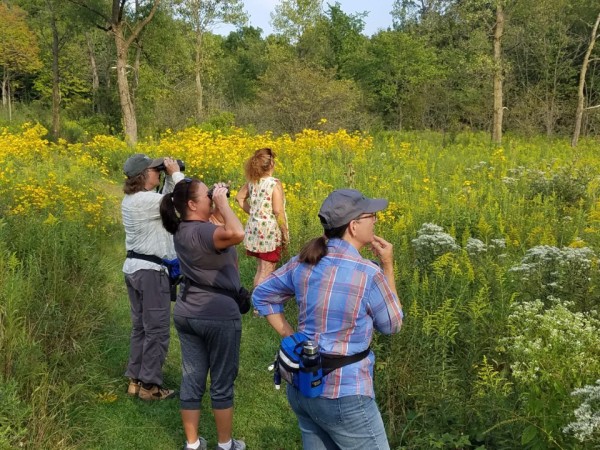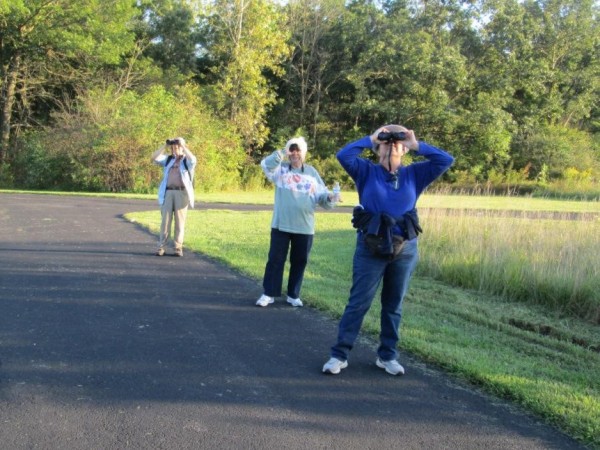Monitoring Fall Monarch Roosts in Northern Illinois
Since 2018, Phyllis and her fellow Master Naturalists, Jo, Sally, Kathy, have been documenting the location and size of fall monarch roosts in northern Illinois to Journey North. This group caught the monarch roost “bug” from discussions with the Master Naturalist coordinator, Nancy Kuhajda. In 2016, a number of Master Naturalists noticed what they thought was a decline of the migrating population of monarchs. Ms. Kuhajda asked Phyllis and others to investigate the reasons for the monarch population decline.
This investigation led the group to write an outreach booklet and pamphlet, filled with information about the importance of planting milkweed and other nectar rich plants. This group have also given many talks to local gardening groups about the importance of pollinator habitats.
During their research, Phyllis, Jo, Sally, Kathy, noticed that where was not much information on monarch roosts. In 2018, they decided to take a deep dive into roosts. Traveling every night to several locations including local Forest Preserves and other locations like the Midewin National Tallgrass Prairie and Goose Lake Prairie, they were on a mission to document roosting locations. They invited all Master Gardeners and Master Naturalists to join this mission. Their diligence and hard work paid off.
Over many forays, the group's search was unsuccessful. While they viewed monarchs with their binoculars streaming overhead, they did not locate a fall roost. Finally, due to a cold front, monarchs were forced to land and take refuge. This was the first roost found.
Phyllis created this video footage that captured their first year going out to find roosts.
Since these early days, they identified several critical fall roost “hot spots” that deserve to be protected and monitored, such as Goose Lake Prairie in Morris, Illinois.
Here are a few of their Journey North reports through the years:
Phyllis is now 70 years old and has been a volunteer steward for 30 years. She hopes that the next generation of stewards become involved in monitoring monarch migration, planting milkweed and pollinator gardens, and generally protect important habitat so that monarchs continue to have a place to rest on the journey south during the fall migration.
Nancy Kuhajda, Extension Coordinator with the University of Illinois at Urbana-Champaign, College of Agricultural, Consumer and Environmental Sciences, Cooperative Extension Service, Unit 9 - Will County Extension, writes, “[I] have had the fortune to work with these volunteers. I admire this team and have learned so much from them." Nancy Kuhajda described the efforts of these volunteers and their incredible dedication to this elusive phenomenon in a recent blog post.


